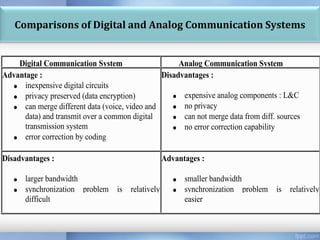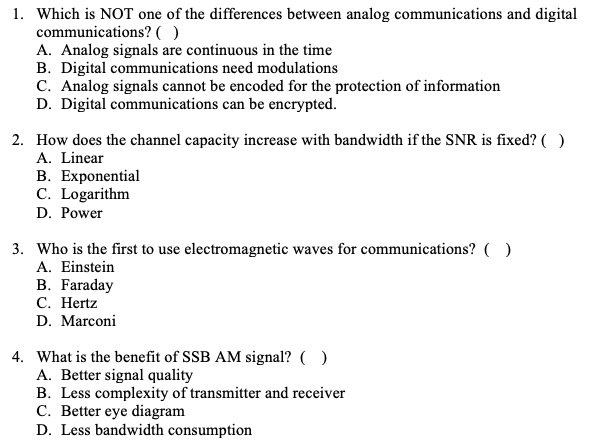Analog and digital communication are two ways of transmitting information from one place to another. While both methods have their own advantages and disadvantages, there are some key differences between the two.
An analog communication system is one that transmits information in the form of continuous signals, such as waves or currents. These signals can take on an infinite number of values, making them well suited for transmitting analog data, such as sound or images. In an analog system, the quality of the transmitted signal can degrade over distance or time, and can be affected by noise and interference.
Digital communication, on the other hand, involves the transmission of information in the form of discrete digits, or bits. These bits can only take on a finite number of values, typically represented as ones and zeros. Digital systems are well suited for transmitting digital data, such as text or numbers. One of the main advantages of digital communication is that it is less susceptible to noise and interference than analog systems, as the transmitted information is usually encoded and error-corrected to ensure accuracy.
Another key difference between analog and digital communication is the way in which they are transmitted. Analog signals are typically transmitted over continuous media, such as cables or airwaves, while digital signals are transmitted in a series of pulses or packets. This allows digital systems to transmit more information over a given bandwidth than analog systems, as the pulses can be more densely packed.
In terms of applications, analog communication is commonly used in radio and television broadcasting, telephone systems, and other systems that require the transmission of continuous signals. Digital communication, on the other hand, is widely used in computer networks, the Internet, and mobile communication systems.
Overall, the choice between analog and digital communication depends on the specific needs of the application. While analog systems are well suited for transmitting continuous signals, digital systems offer the advantage of being more robust and efficient in the transmission of digital data.







